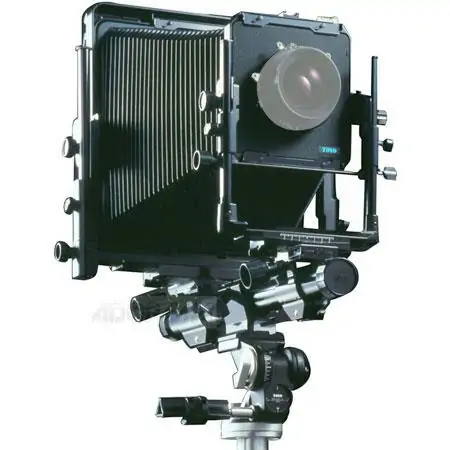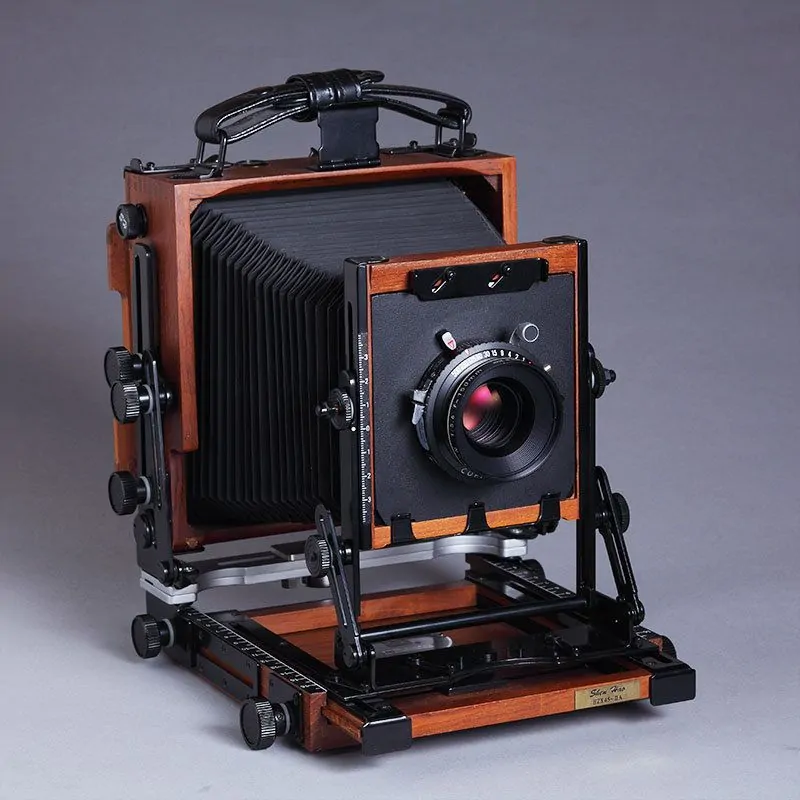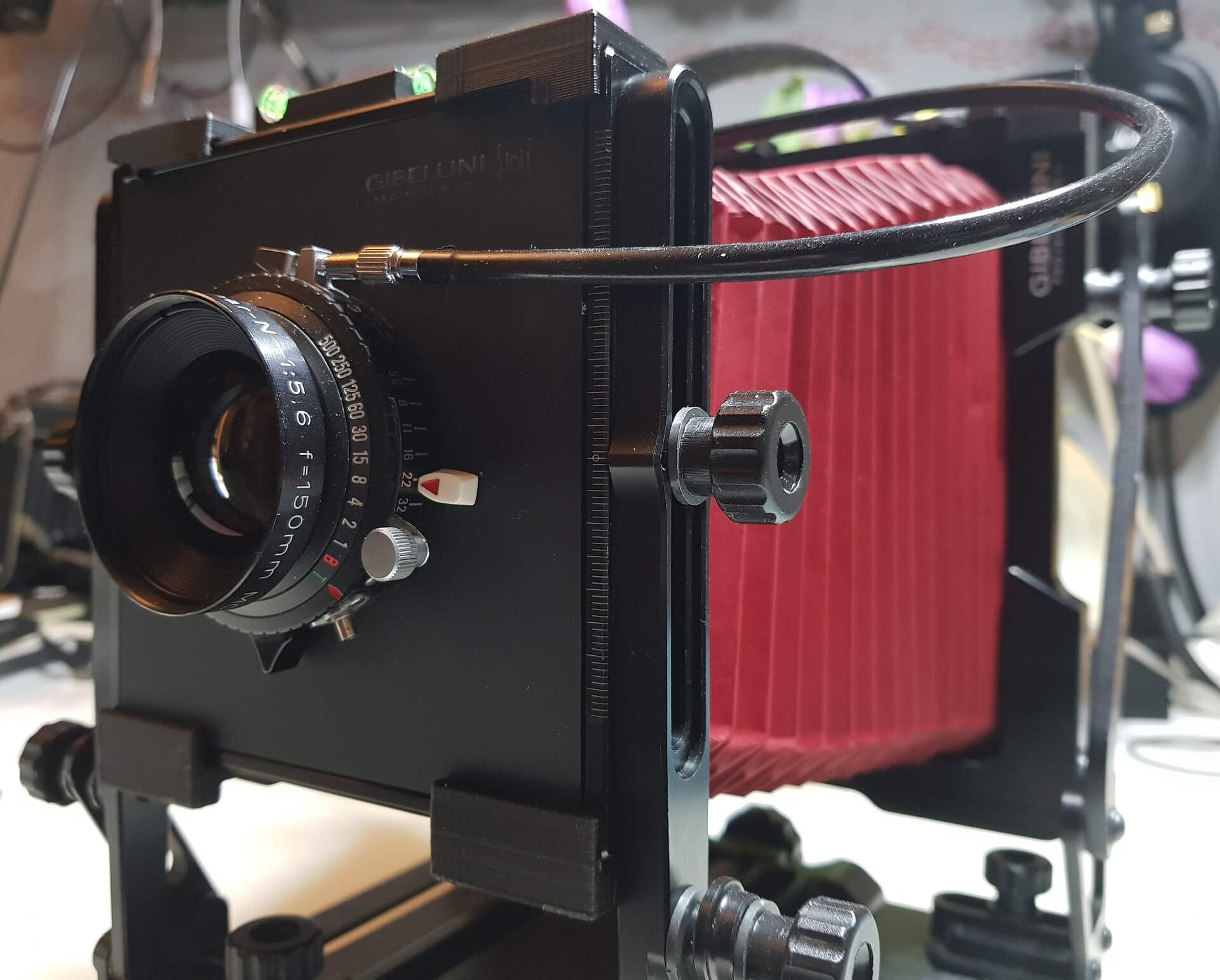Most people taking photos do not need a legitimate camera for what they do. For those who do use actual cameras, something akin to a 35mm camera is more than good enough. But what about when you need to take the highest resolution pictures possible? That’s where large format cameras come in. But what is large format, what sort of cameras do you use, and why would you use them?
What is Large Format?
Defining 'Large Format Camera'
Before talking about the type of large format cameras that exist and what they’re used for, we want to give you a basic “what is large format” definition. This information pertains to 4x5 film cameras, as well as 5x7 and 8x10 styles, though there will also be mention of film cameras, as some of this info is similar between the two.
LARGE FORMAT CAMERA DEFINITION
What is large format photography?
A large format camera is a camera with a frame that measures 4x5 inches or more. Due to 4x5 being the minimum requirement, equipment may be referred to as a 4x5 camera. 8x10 is usually the largest and most detailed large format film camera that does not require further enhancement when developing the image. In filmmaking, large format usually refers to film stock that is 65mm and 70mm (or digital equivalents).
Large format camera characteristics:
- Larger and more expensive stock, cameras, and lenses (4x5, 5x7, 8x10)
- The highest quality footage and images around
- Shallow depth of field
- Incredible detail and focus
Large Format Models
Large format camera types
When we are talking about a 4x5 camera and large format lenses, we are talking about two main camera types: monorail camera and field camera.
A monorail camera is what you might expect if you were looking for a large format photography view camera. A rail connects the front and back, allowing you to move it around in many different ways. So while it gives you a lot of leverage, it’s also heavy and more expensive than a field camera.

Monorail 4x5 large format camera
The weight and cost of a monorail style 4x5 film camera limits its use to studio work and only some outdoor work. You would not want to take a monorail camera to, say, a forest since it will be a lot of trouble to get it setup.
Thus, a monorail camera is ideal for studio artists who are taking indoor photos. If you are using a monorail outdoors, you probably won’t be moving a whole lot, so studio rules can still apply.
A field camera is lighter and cheaper than a monorail, but that’s not the only appealing thing about it. Looking like the type of camera news photographers used to have, a field camera is collapsable, making it extra great for when you’re on the go. So if you do want to take photos in the forest, a field camera is the right choice.

Field 4x5 large format camera
However, as great as a large format film field camera might be, it does have its limitations. The most notable limitation is the lack of a flexible rail in-between the front and back. This means that easy adjustment with a field is more difficult, though by no means impossible.
But keep in mind, due to this lack of a flexible rail, you might not want to use a field camera to photograph a tall building.
Wide Format Camera
Large format camera lenses
Once you have chosen a camera style, make sure you know what sort of large format lenses and film you want to use. Getting the right large format lenses for the dimensions you’re going to use is vital, as is the type of sheets, since your lens will want plenty of room for coverage and safety.
Sheets take the place of a film roll and are placed in the front of the camera; if you get a sheet that’s too small, your lenses might have big trouble getting a good image.
As can be seen, a lot can go into getting a view camera (like a tripod, on top of everything else). Many of these cameras can be purchased in the second hand market, as well as directly from the manufacturers. However you decide to get your camera, just make sure you do a lot of research.
Related Posts
What is Large Format Good For
Subjects for large format photography
A 4x5 camera can be used for important portrait photographs and environments. Portraits in particular have an audience, as they allow for extremely high quality imagery that, well, makes for a great portrait. The video below shows us how to use a large format camera.

What is large format? • Portraits
Portraits are good if you’re using a very large format camera, especially monorail style. Being in one place that lets you adjust at your leisure is beneficial, especially since the elements of an environment will almost never affect your work indoors.
You have a stronger control of any adjustments you make, how they can be made, and where to keep your camera placed. A big studio space, or even a smaller one, allows for a very large format camera to breath without intrusion.
For more portrait photography tips, there are various considerations. Consider which lens is best for portraits, lighting techniques like Rembrandt lighting and the medium such as black and white portrait photography. And don't forget to make a portrait shot list.
Environments are the other major use for a large format film camera. While you can use a monorail, you might have an easier time using a field camera (as seen in the video below). Since the field camera is smaller, lighter, and collapsable, it makes it easier to bring with you in many different outdoor locations. If you are going to use a monorail camera outdoors, it will most likely be for something stationary, like a building.

What is large format? • Canadian Badlands
Your budget and intentions will ultimately decide what sort of camera you choose. The world of large format camera photography is unique and important, whether you’re a professional or not. Make sure you do as much research as possible and understand what you’re getting yourself into.
Shooting with large format film can be hard work, but those high quality rewards are always worth it.
UP NEXT
What is IMAX?
Now that you have read up on large format cameras, it’s time to read about the biggest name in the game: IMAX. Our article covers the history of the format, the innovations the company made, and how it expanded its reach into mainstream cinema.
Up Next: History of IMAX →
Showcase your vision with elegant shot lists and storyboards.
Create robust and customizable shot lists. Upload images to make storyboards and slideshows.

